Algeria, the largest country in Africa and the tenth largest in the world, is a land of stunning diversity, where ancient history, rich culture, and breathtaking landscapes converge. From the vast expanse of the Sahara Desert to the lush Mediterranean coastline, and from bustling urban centers to remote mountain villages, Algeria offers travelers an unparalleled variety of experiences.
For the adventurous traveler or backpacker, Algeria is a treasure trove waiting to be discovered. With its unique blend of North African, Berber, Arab, and Mediterranean influences, Algeria provides an authentic travel experience far from the crowded tourist trails. This guide will take you through everything you need to know to explore Algeria, including the best destinations, practical tips for backpacking, cultural insights, and much more.
Why Visit Algeria?
Algeria is often overlooked by travelers in favor of more well-known North African destinations like Morocco or Egypt. However, this lesser-explored gem offers an array of experiences that rival, and often surpass, its neighbors. Here are some compelling reasons to put Algeria at the top of your travel list:
Diverse Landscapes: From the sweeping dunes of the Sahara to the snow-capped peaks of the Atlas Mountains, Algeria boasts an incredible variety of natural landscapes. Coastal cities like Algiers and Oran offer Mediterranean charm, while the desert regions reveal ancient ruins and fascinating rock art.
Rich History and Culture: Algeria’s history stretches back millennia, with influences from Phoenicians, Romans, Berbers, Arabs, and French colonizers. This rich tapestry is reflected in its architecture, cuisine, and cultural traditions.
Adventure Opportunities: Algeria is a haven for adventure enthusiasts. Whether you’re hiking in the Hoggar Mountains, exploring the Tassili n’Ajjer, or skiing in Chréa National Park, there is no shortage of thrilling activities to pursue.
Off-the-Beaten-Path Experience: Algeria offers a more authentic travel experience compared to other North African countries. With fewer tourists, you’ll find that many of Algeria’s attractions remain untouched and uncrowded, allowing for deeper connections with local culture and people.
15 Incredible Places to Visit in Algeria: Your Ultimate Travel Guide
Algeria, the largest country in Africa, is a treasure trove of diverse landscapes, rich history, and vibrant culture. From the golden dunes of the Sahara Desert to the bustling coastal cities along the Mediterranean, Algeria offers a range of experiences for every traveler. Whether you are a backpacker seeking adventure, a history enthusiast, or a nature lover, Algeria has something special to offer. Here are some of the must-visit destinations and top places to explore in this captivating country:
1. Algiers: The White City
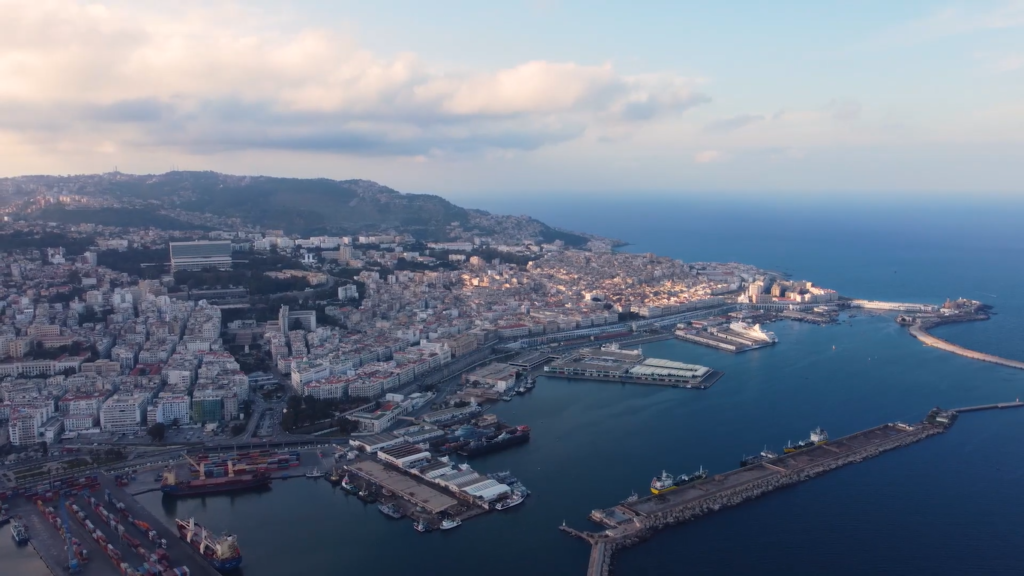
Algiers, the capital city of Algeria, is often called “Algiers the White” due to its dazzling white buildings that overlook the Mediterranean Sea. The city is a blend of modernity and tradition, featuring French colonial architecture, ancient Ottoman palaces, and vibrant markets.
- Highlights: The Casbah of Algiers, a UNESCO World Heritage site, is a maze-like old town filled with narrow alleys, traditional houses, and historic mosques. Don’t miss the Notre-Dame d’Afrique basilica, which offers stunning views over the bay of Algiers, or the bustling Martyrs’ Square, which is surrounded by cafes and shops.
2. Tlemcen: The Pearl of the Maghreb
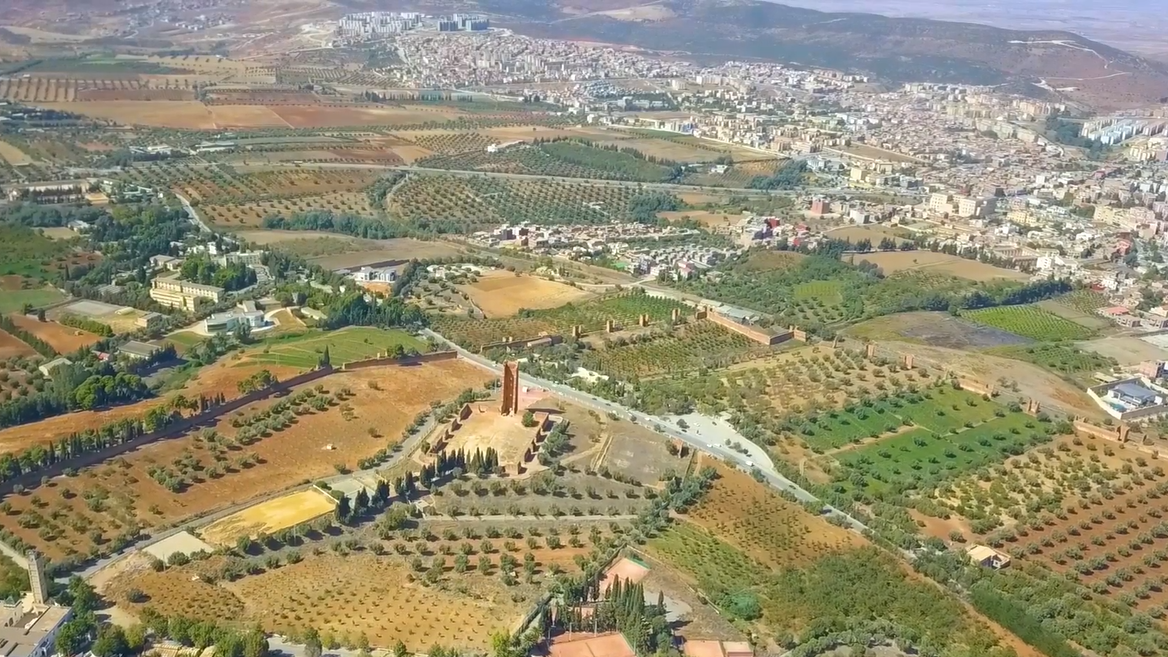
Tlemcen, located in the northwest of Algeria, is known for its rich cultural heritage and stunning architecture. The city has been a center of trade, culture, and religion for centuries, and it boasts a unique mix of Berber, Arab, Andalusian, and Ottoman influences.
- Highlights: Visit the Grand Mosque of Tlemcen, one of the finest examples of Almoravid architecture, and explore the ruins of Mansoura, the ancient capital of the Zayyanid dynasty. The Lalla Setti Plateau offers panoramic views of the city and surrounding landscapes.
3. Oran: The Joyful City
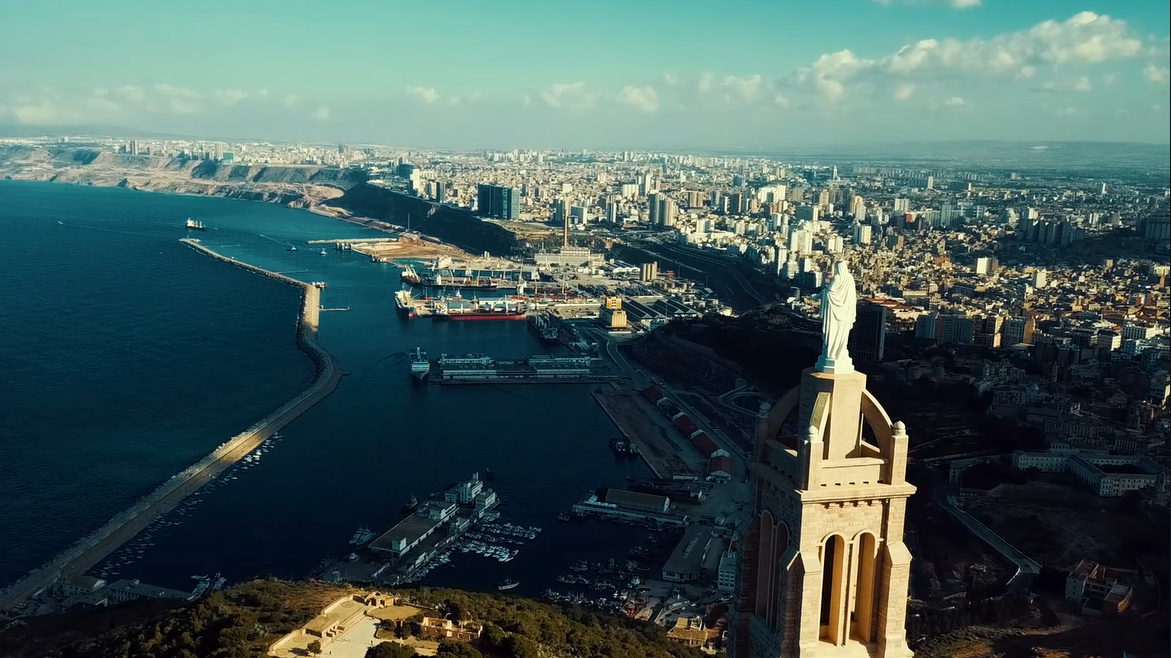
Oran, Algeria’s second-largest city, is known for its lively music scene, beautiful beaches, and vibrant nightlife. The city has a Mediterranean charm with its broad boulevards, colonial-era buildings, and seaside promenades.
- Highlights: Explore the historic district of Sidi El Houari, the majestic Santa Cruz Fort, and the iconic Great Mosque of Oran. Enjoy the local Rai music, a genre born in Oran, and relax on the beautiful beaches such as Ain El Turk and Les Andalouses.
4. Constantine: The City of Bridges
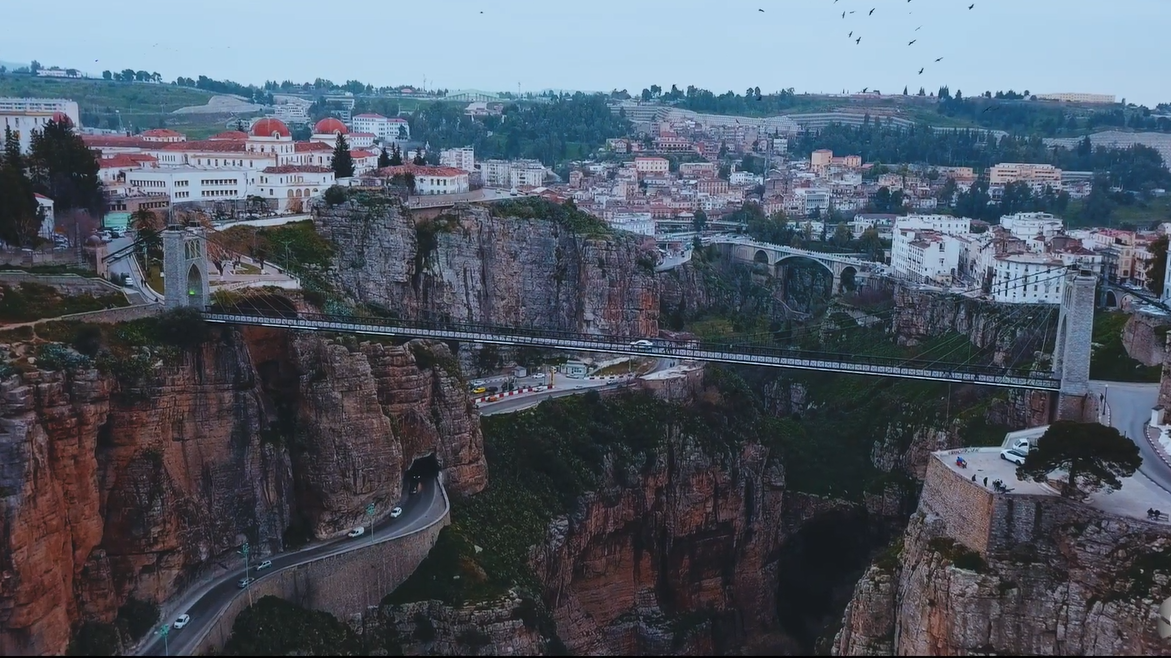
Constantine, perched on a dramatic cliff over the Rhumel River, is often called “The City of Bridges” due to its seven spectacular bridges that connect the city’s different parts. This ancient city has a rich history that dates back to the Phoenicians and has been a cultural hub for centuries.
- Highlights: Visit the Suspension Bridge of Sidi M’Cid, one of the city’s most famous landmarks, and explore the Palace of Ahmed Bey, a 19th-century Ottoman palace. The Cirta Museum offers a fascinating glimpse into Constantine’s past with its collection of Roman, Numidian, and Berber artifacts.
5. Tassili n’Ajjer: The Rock Art Capital
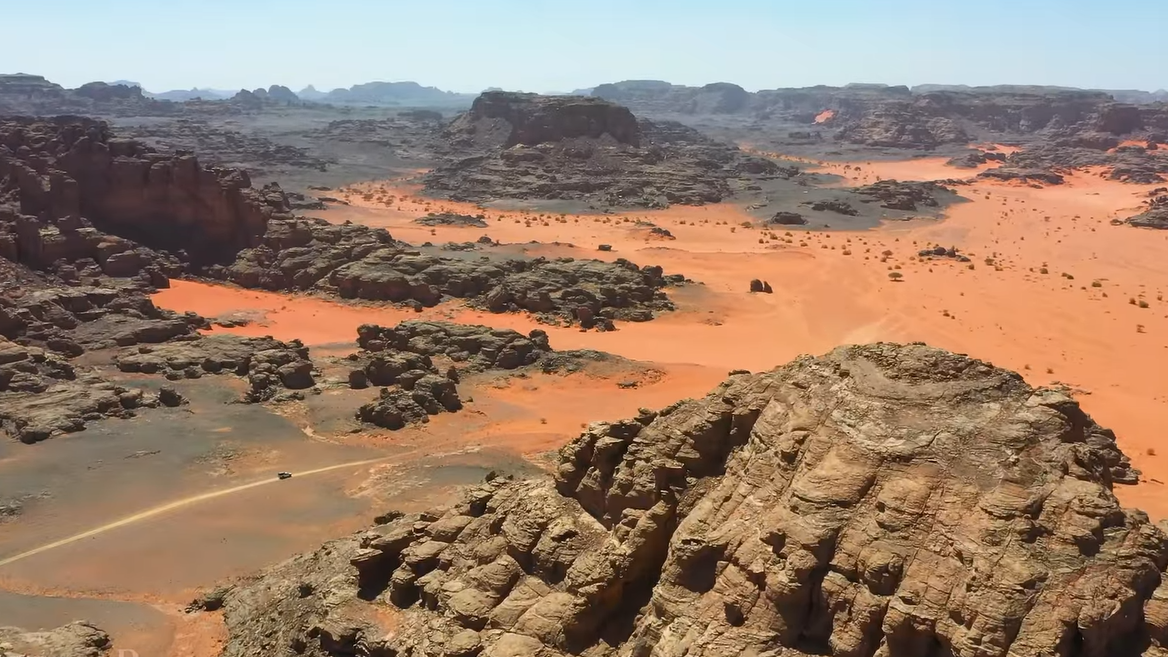
Located in southeastern Algeria, Tassili n’Ajjer is a vast plateau famous for its unique rock formations, canyons, and prehistoric rock art. This UNESCO World Heritage site is home to one of the world’s most important collections of ancient rock paintings and engravings.
- Highlights: Explore the sandstone arches, deep gorges, and rock shelters that house thousands of petroglyphs depicting scenes of daily life, wildlife, and religious rituals from thousands of years ago. Trekking through this surreal landscape offers a sense of adventure and connection to humanity’s early history.
6. Djanet: The Gateway to the Sahara
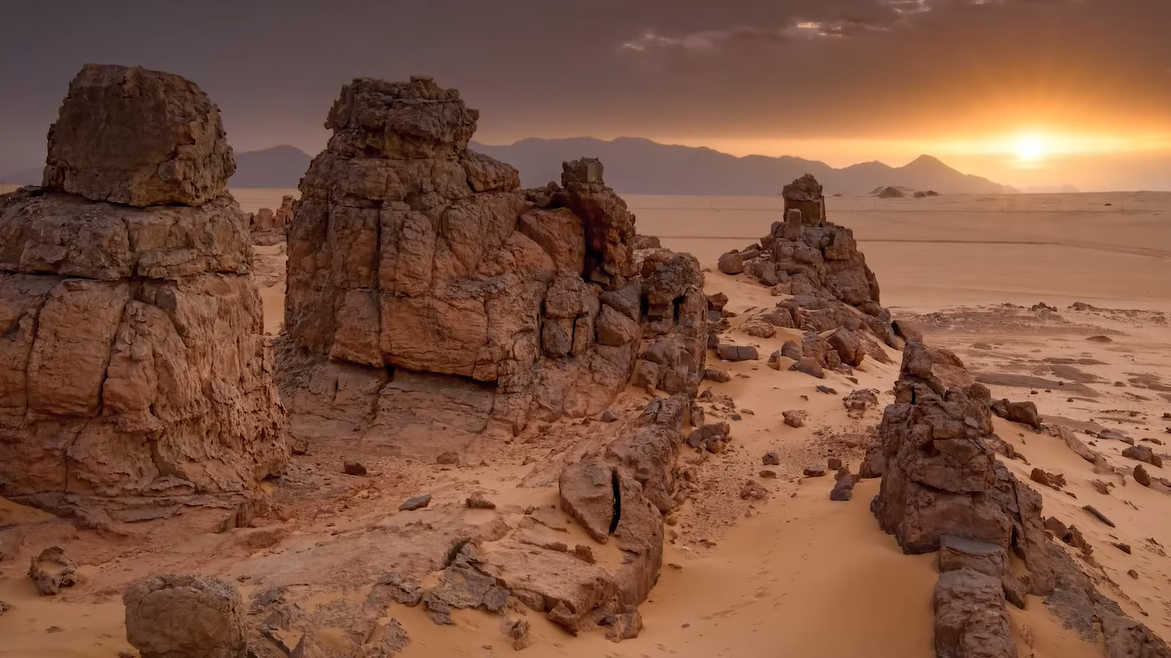
Djanet, an oasis town located in the heart of the Sahara Desert, is the starting point for many desert adventures. The town is known for its palm groves, traditional mud-brick houses, and friendly Tuareg community.
- Highlights: From Djanet, embark on a journey to explore the nearby Tassili n’Ajjer National Park, or venture into the vast sea of sand dunes at Erg Admer. Enjoy a camel ride, sleep under the stars in a desert camp, and experience the tranquility of the Sahara.
7. Ghardaia: The Pearl of the M’Zab Valley
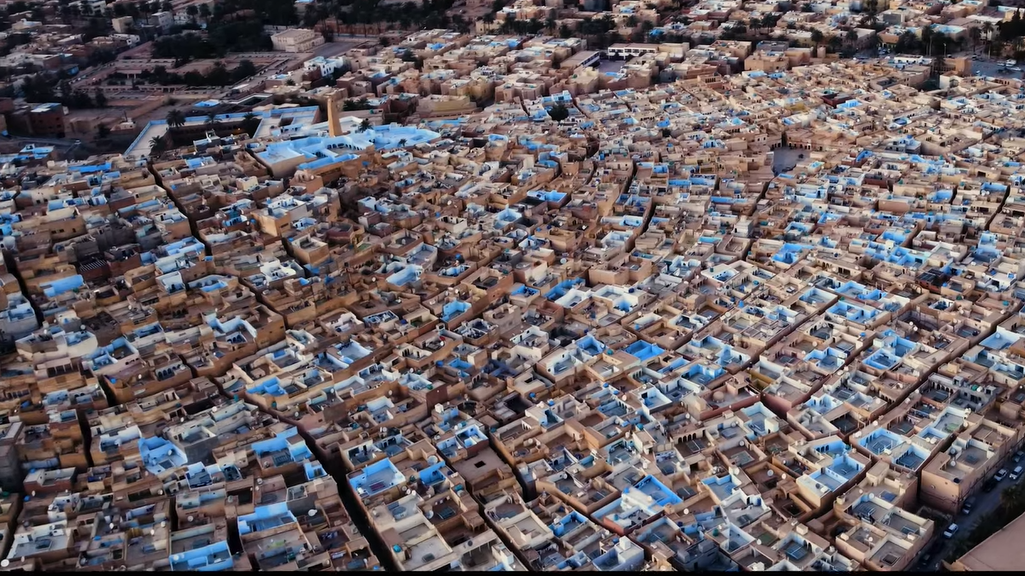
Ghardaia, a UNESCO World Heritage site, is one of the five fortified towns that make up the M’Zab Valley, an area known for its unique architecture, traditional way of life, and rich cultural heritage. The town is characterized by its whitewashed houses, narrow streets, and colorful markets.
- Highlights: Visit the Great Mosque of Ghardaia, a symbol of the town’s spiritual and social life, and explore the vibrant souks where you can find handmade carpets, jewelry, and local crafts. Take a walk along the ancient city walls and enjoy the panoramic views of the oasis and palm groves.
8. Hoggar Mountains: The Roof of the Sahara
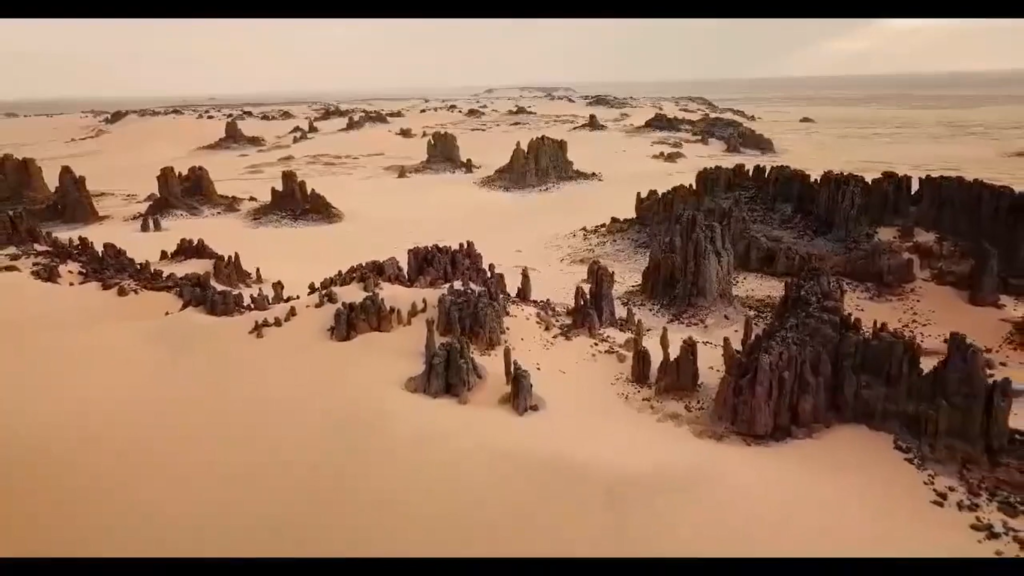
The Hoggar Mountains, located in southern Algeria near the city of Tamanrasset, offer a stark yet stunning landscape of volcanic peaks, granite cliffs, and deep valleys. This rugged region is a haven for adventure seekers and nature lovers.
- Highlights: Climb Mount Tahat, the highest peak in Algeria, and explore the Assekrem Plateau, where the famous French priest and explorer Charles de Foucauld lived as a hermit. The region is also home to unique wildlife, including Barbary sheep and desert foxes.
9. The Ruins of Timgad: The Pompeii of Africa
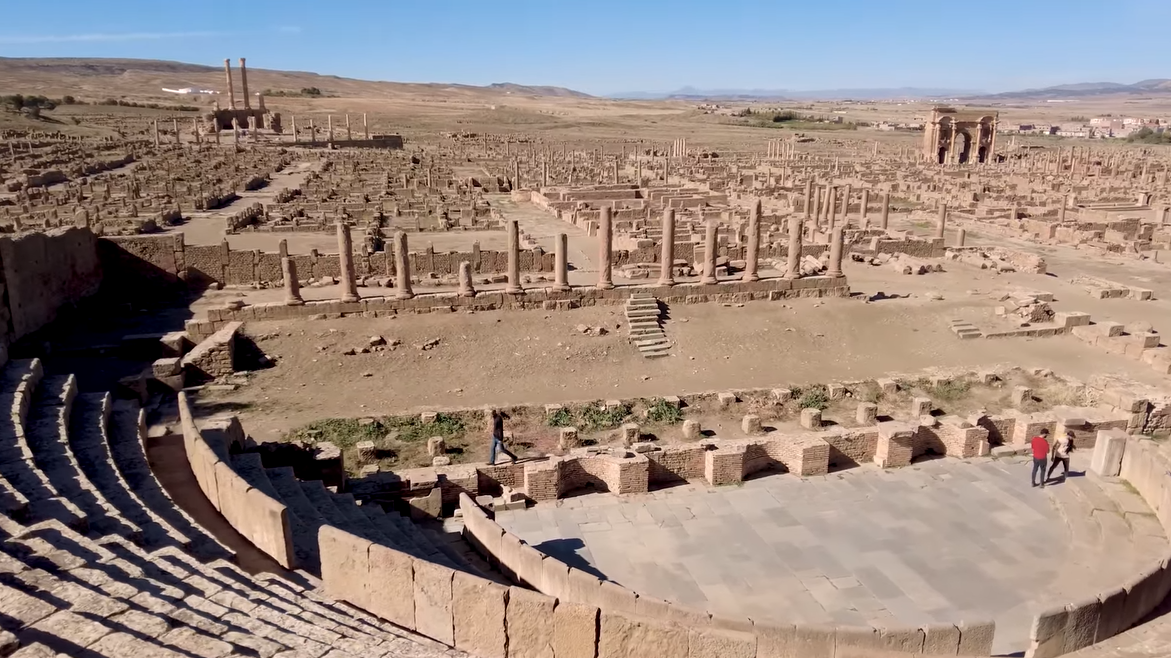
Timgad, an ancient Roman city located in the Aurès Mountains, is often referred to as “The Pompeii of Africa” due to its well-preserved ruins. Founded by Emperor Trajan in AD 100, Timgad offers a fascinating glimpse into Roman urban planning and architecture.
- Highlights: Wander through the remnants of the city’s streets, baths, temples, and theaters. The Arch of Trajan, the Forum, and the Capitoline Temple are among the most impressive structures. The nearby site of Lambaesis, another Roman settlement, is also worth a visit.
10. Sefar: The Mysterious City of Djins
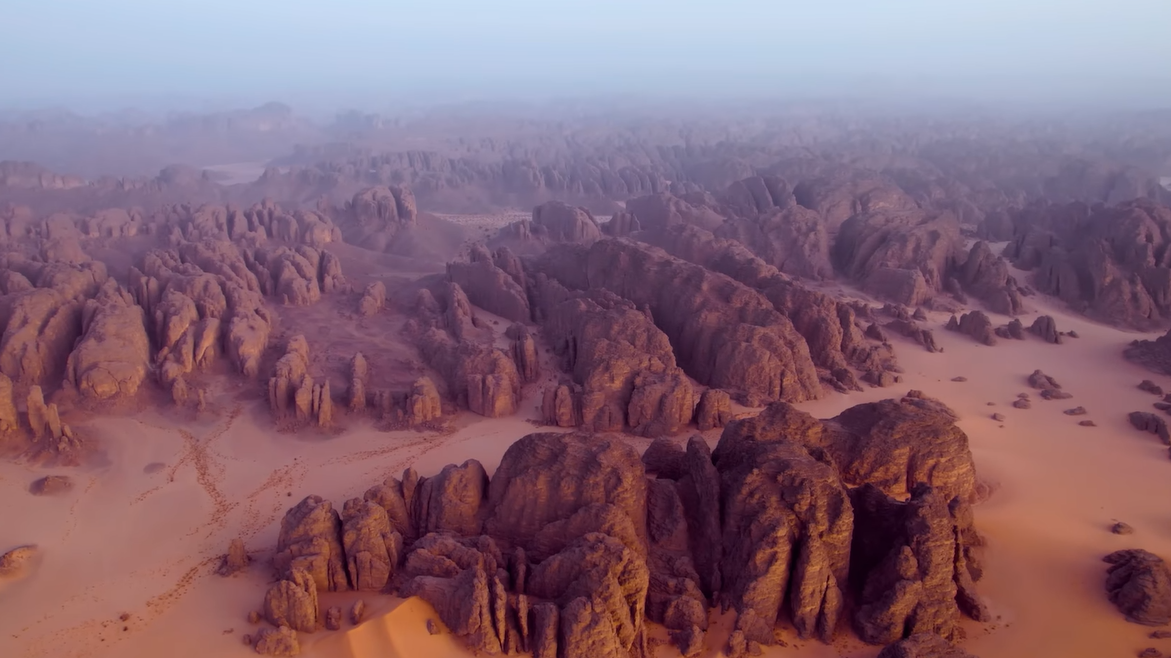
Located in the heart of the Tassili n’Ajjer plateau, Sefar is known as the “City of Djins” due to its surreal landscape and ancient rock art. It is one of the world’s largest open-air museums, with thousands of paintings and carvings that date back over 6,000 years.
- Highlights: Explore the labyrinthine rock formations, caves, and canyons that make up Sefar. Discover the mysterious petroglyphs that depict scenes of daily life, wildlife, and mythical creatures. The story of Aleister Crowley’s visit to Sefar, where he claimed to have encountered supernatural forces, adds an eerie allure to this enigmatic site.
11. Chréa National Park: A Snow-Capped Wonderland
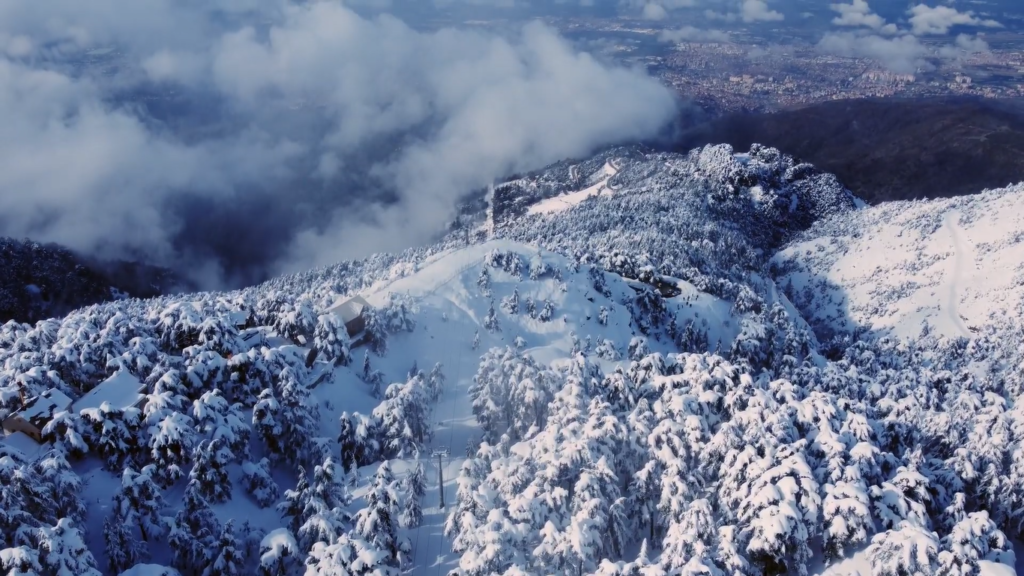
Nestled in the Tell Atlas Mountains, Chréa National Park is one of the few places in Algeria where you can experience snow. The park is known for its dense cedar forests, snow-covered peaks, and diverse wildlife.
- Highlights: In winter, Chréa becomes a popular destination for skiing and snowboarding, while in summer, visitors can enjoy hiking, bird watching, and picnicking. The park is also home to the endangered Barbary macaque, which can be seen roaming in the forests.
12. Béjaïa: The Gem of the Kabyle Coast
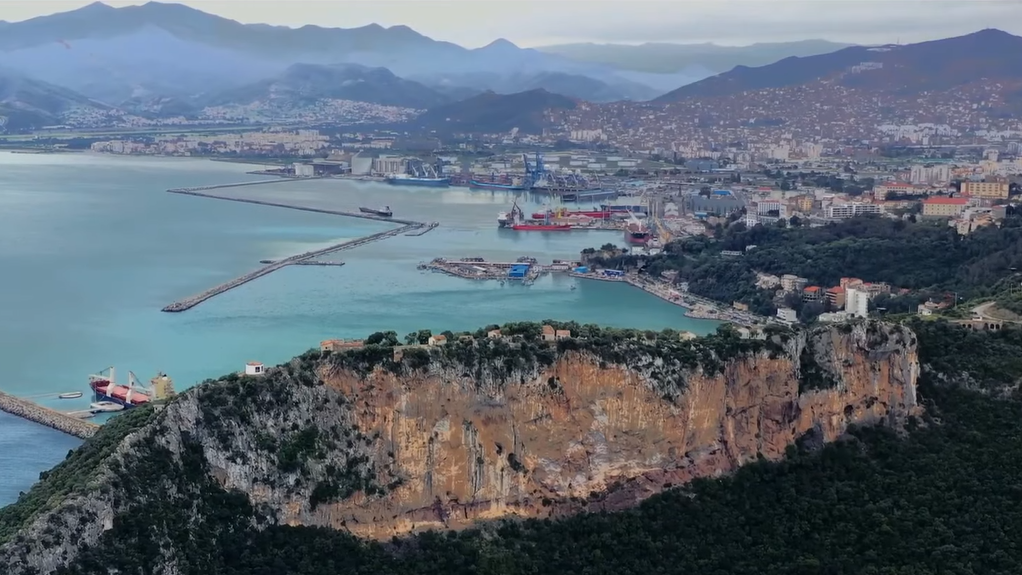
Located along the Mediterranean coast, Béjaïa is known for its beautiful beaches, lush green landscapes, and historical sites. The city has a rich Berber heritage and has been an important trading port since ancient times.
- Highlights: Visit the Cape Carbon Lighthouse for panoramic views of the coast, explore the ancient Roman ruins of Saldae, and relax on the beaches of Tichy and Saket. The Gouraya National Park, located nearby, offers opportunities for hiking, wildlife spotting, and exploring caves.
13. The M’zab Valley: A Timeless Oasis
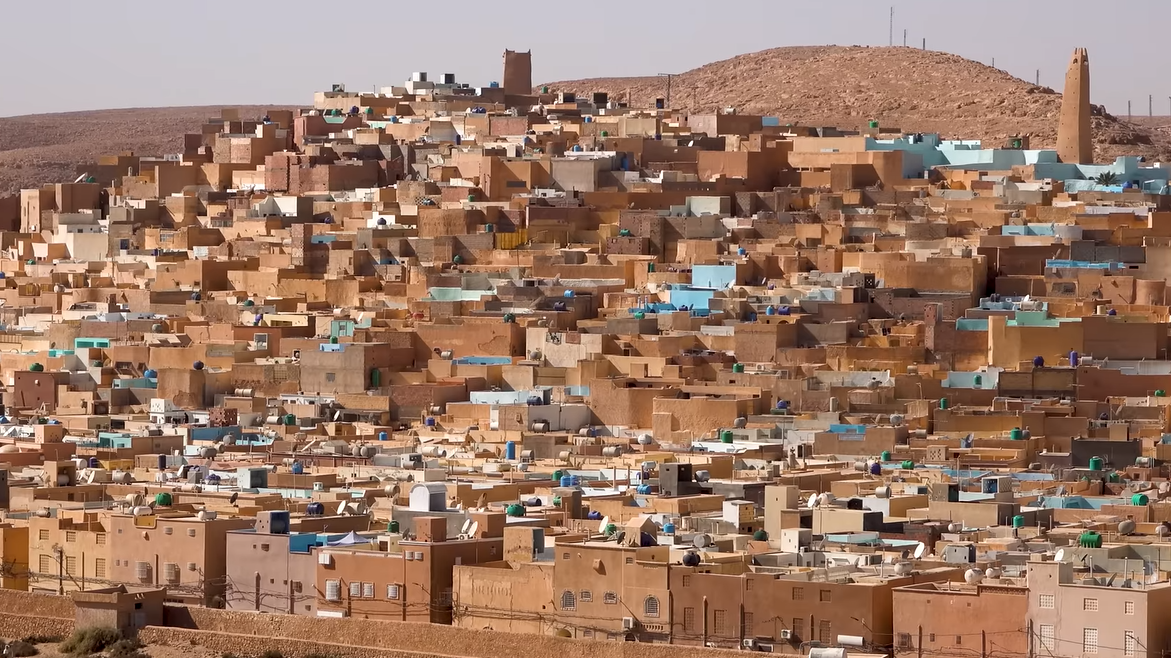
Located in the northern Sahara, the M’zab Valley is a UNESCO World Heritage site known for its unique blend of natural beauty and human ingenuity. This valley is home to five fortified towns built by the Ibadi sect of Islam, with distinct white-washed architecture that has remained unchanged for centuries.
- Highlights: The town of Beni Isguen is particularly famous for its picturesque streets and bustling market, where local artisans sell hand-woven carpets, pottery, and silver jewelry. The palm groves and ancient wells of the valley offer a glimpse into the sustainable living practices of the local population.
14. The Aurès Mountains: Land of the Chaoui
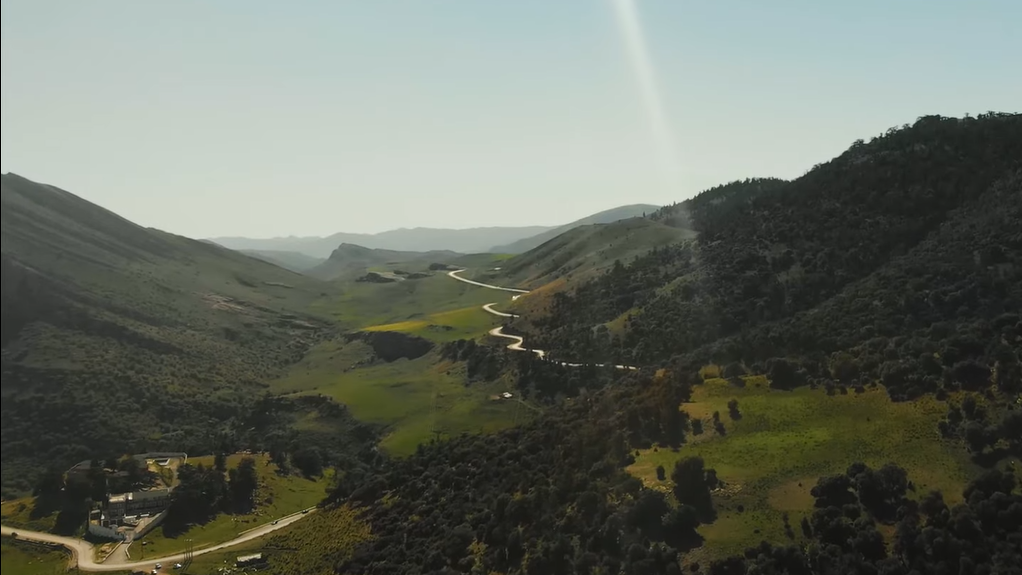
The Aurès Mountains, located in eastern Algeria, are home to the Chaoui people, known for their vibrant culture and traditions. The region is characterized by its rugged landscapes, deep gorges, and historic sites.
- Highlights: Explore the Ghoufi Canyon, a stunning gorge with ancient cave dwellings, and visit the ancient Roman site of Timgad, known as the “Pompeii of Africa.” The region is also famous for its traditional music, dance, and handicrafts.
15. The Sahara Desert: A Vast Sea of Sand
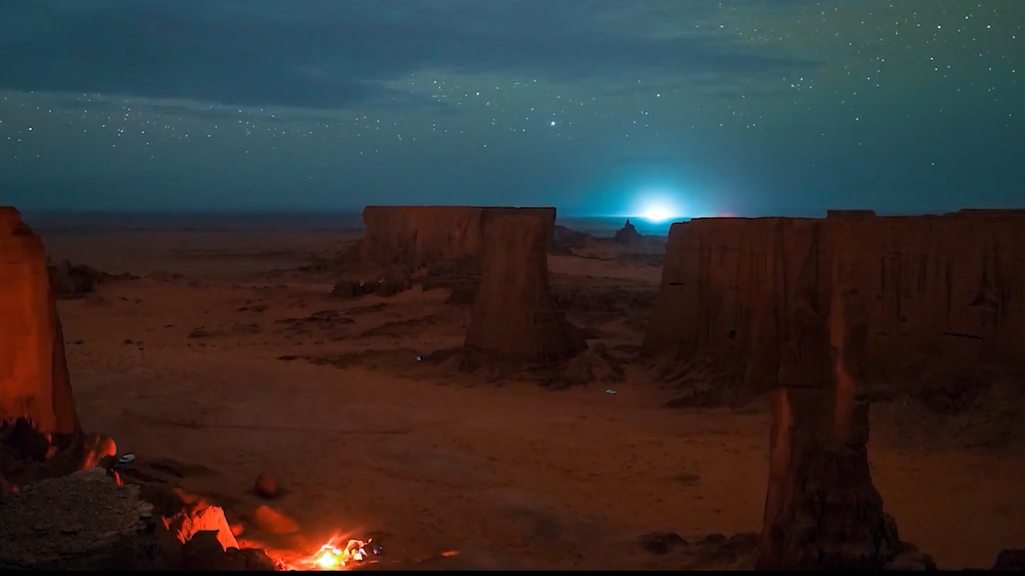
No trip to Algeria would be complete without experiencing the vastness of the Sahara Desert, the world’s largest hot desert. The Algerian Sahara offers endless opportunities for adventure, from camel trekking and sandboarding to camping under thents.” The site offers a unique glimpse into ancient civilizations and a surreal landscape of sandstone formations.
Cultural Insights and Experiences
1.Algerian Cuisine: A Culinary Journey
The culinary delights of Algeria have been enhanced by a multitude of influences, each of which has added something special to the cuisine. Algeria’s cuisine has been impacted for hundreds of years by Arabs, Berbers, Turks, Romans, French, and Spanish settlers. Algeria’s cuisine includes a diverse blend of tastes, scents, and textures that are prepared in a variety of ways and are very palatable because to the contributions of each of these cultures.
Algerian cuisine is notably influenced by the Berbers, as seen by the usage of stews, lamb, vegetables, cereals, and dried fruits. Along with a range of delectable sweets, the Turks and Arabs have added spice to the mix. The usage of tomato puree, along with French aperitifs and desserts, has considerably influenced Algerian cuisine. The unique tastes of fennel, marjoram, cumin, caraway, and coriander found in Algerian food will be apparent to you. Meals usually feature Mediterranean seafood along with lamb and poultry. Couscous is the national meal of Algeria; it is cooked and served with sauce, meat, and vegetables.
What better way to experience Algerian food than by trying some of these dishes:
APPETIZERS
Bourek,Maakouda,Harira,Chakchouka,Chorba Frik,Mhadjeb,Salata Méchouia,Felfel Mahchi,Batbout,Hmiss,Tchicha Soup,Batata Harra,Safiha,Tchoumicha,Bissara,Briwat.
Main Courses
Couscous-Chakhchoukha-Rechta-Berkoukes-Karantika/Garantita/Lhami-Tajine Zitoun-Lham Lahlou-Bouzelouf-Mhajeb-Tlitli-Rogag-Mechoui-Trida-M’touem-Rfiss-El Mhamsa-Khliaa-Maqrouna-Mderbel-and the so called between locals by The Princess of The Table “fritte omlette”.
Desserts
Makroud-Qalb El Louz-Tcharek-M’semen-Basbousa-Baghrir-Zlabia-Griwech-Samsa-Chrik-Bourek El Louz-Ghriyba-Kaberzine-Sablé-Mchewek-Tamina-Kaak T’lemcen-Qtaif-Zrir-Tourment d’Amour-Baklawa-Aarayech-Ghribia-Cherbet-M’halbi-Assida-Boudoir
2.Historical Heritage
Islamic Influence: The country has a significant Islamic heritage, with many mosques and religious sites, including the impressive Ketchaoua Mosque in Algiers
Ancient Civilizations: Algeria’s history includes influences from ancient Carthage, Rome, and Byzantium. The ruins of Timgad and Djemila are UNESCO World Heritage Sites that showcase Roman architecture and urban planning.
3.Diverse Cultures
- Berber Culture: The Berber, or Amazigh people, are indigenous to the region and have a rich cultural heritage. Their language, Tamazight, is officially recognized, and traditional crafts like weaving and pottery are prominent.
- Arab Influence: The Arab conquest in the 7th century brought Islamic culture and Arabic language, blending with the Berber traditions.
4.Festivals and Celebrations
- Aïd al-Fitr and Aïd al-Adha: These Islamic festivals are celebrated with communal prayers, feasting, and charitable giving.
- Yennayer: The Berber New Year, celebrated on January 12th, marks the beginning of the agricultural year with traditional music, dancing, and feasting.
5.Music and Dance
- Raï Music: Originating from Oran, Raï is a popular genre that blends traditional Algerian folk music with modern sounds. It often features themes of love, social issues, and personal freedom.
- Traditional Dance: The Kabyle dance, performed by the Berber people, involves rhythmic movements and is often accompanied by traditional music.
6.Crafts and Arts
- Handicrafts: Algerian crafts include intricate jewelry, hand-woven carpets, and pottery. The craftsmanship is often passed down through generations and reflects regional styles.
- Architecture: The traditional architecture includes distinctive mud-brick houses in the Sahara, ornate palaces in cities like Algiers, and ancient ruins from various periods.
7.Language and Literature
- Languages: Arabic is the official language, while Berber languages are widely spoken in certain regions. French is also used, particularly in business and education.
- Literature: Algerian literature often reflects the country’s history and cultural identity. Authors like Assia Djebar and Kateb Yacine have made significant contributions to modern Arabic literature.
Cultural Etiquette and Practices
Understanding and respecting local customs is crucial when traveling to Algeria. Here are some cultural nuances to keep in mind:
Dress Code
- General Guidelines: Algeria is a predominantly Muslim country, and modest dress is appreciated, especially for women. In cities, casual yet conservative clothing is suitable, while in rural areas or smaller towns, it’s advisable to dress more modestly.
- For Women: Long skirts, dresses, or trousers paired with tops that cover the shoulders and chest are recommended. Carrying a scarf to cover your head when entering mosques or religious sites is also a good idea.
- For Men: Avoid wearing shorts, particularly in more conservative or rural areas. Lightweight trousers and collared shirts are ideal.
Social Customs and Greetings
- Greetings: A handshake is common among men. Women may greet each other with a kiss on each cheek. In mixed-gender interactions, it’s best to wait and see how the other person greets you to gauge their comfort level.
- Hospitality: Algerians are known for their hospitality. It’s common to be offered tea or coffee when visiting homes or shops. Accepting such offers graciously is considered polite.
- Respect for Religion: Friday is the holy day in Islam, so expect many businesses and sites to be closed. During the month of Ramadan, respect fasting practices by refraining from eating, drinking, or smoking in public during daylight hours.
6 Unique Experiences: Must-Try Activities in Algeria
Desert Camping in the Sahara
Experience the vastness of the world’s largest desert with an unforgettable camping adventure in the Sahara. Join a guided tour to explore the sand dunes, enjoy traditional meals under the stars, and listen to local stories around a campfire. Popular areas for desert camping include Djanet and Tamanrasset, where you can also embark on camel treks.
Hiking in the Atlas Mountains
The Atlas Mountains, stretching across the northern part of the country, offer numerous trails for all levels of hikers. Whether you’re trekking in the Kabylie region, exploring the cedar forests of the Chréa National Park, or ascending the higher peaks in the Djurdjura Range, you’ll be rewarded with stunning vistas and a sense of adventure.
Discovering the Ancient Roman Ruins
Algeria is home to some of the best-preserved Roman ruins in Africa. The cities of Timgad and Djemila, both UNESCO World Heritage Sites, offer a glimpse into the grandeur of the Roman Empire with their impressive temples, arches, and theaters. Explore the ancient streets and imagine life in Roman North Africa.
Skiing in Chréa National Park
Few travelers associate Algeria with skiing, but Chréa National Park is one of the rare places in North Africa where you can hit the slopes. The park’s ski resort, located just a short drive from Algiers, offers a unique winter experience. Enjoy skiing or snowboarding amidst cedar forests and breathtaking mountain views.
Experiencing the Algerian Hammam
A visit to a traditional Algerian hammam (bathhouse) is a must. These communal baths offer a chance to relax, rejuvenate, and experience an integral part of local culture. Enjoy the steam rooms, hot water baths, and traditional scrubbing techniques that leave you feeling refreshed and renewed.
Exploring the Rock Art of Tassili n’Ajjer
Embark on a journey to the Tassili n’Ajjer National Park to discover its UNESCO-listed prehistoric rock art. These ancient paintings and carvings, some over 10,000 years old, provide a fascinating glimpse into the lives and beliefs of the area’s early inhabitants. A guided tour is recommended to fully appreciate the significance of these artworks.



